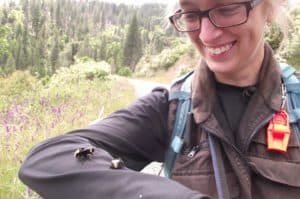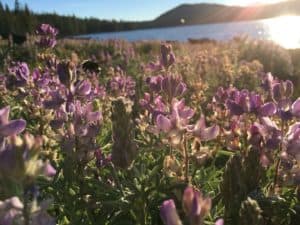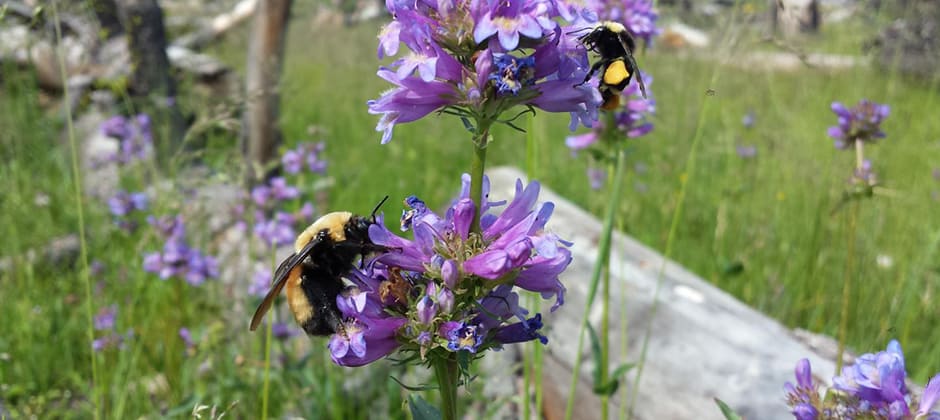Share this article
Bumble bee species have favorite flowers
Different species of bumble bees in the Sierra Nevada select different types of flowers, according to new research, which has conservation implications for promoting the growth of pollinator populations.
In the Plumas National Forest, researchers wanted to know which bumble bee species occurred in the region, and where.
“We were already out there capturing all the bumble bees. We wanted to see what floral resources were out there,” said TWS member Jerry Cole, a staff biologist at the Institute for Bird Populations and lead author of the study published in Environmental Entomology.
“Since we had all this bumble bee data, we thought it would be great to understand the plant species they preferred,” Cole said. “The idea was maybe we could use this information to potentially enhance habitat for bumble bees by adding particular plant species they preferred.”

Two Vosnesensky bumble bee (Bombus vosnesenskii) queens appear on the sleeve of field biologist Alma Schrage before being released. ©The Institute for Bird Populations
Past studies had looked at more general characteristics of plant species that bumble bee species preferred. Cole’s team wanted to determine if different bumble bees selected for different types of plants.
Cole and his colleagues went out to capture bumble bees, using a net to capture any they found on flowers or in the air. They chilled the insects, took photos, identified them, and once the insects had warmed up, they flew away.

A Vosnesensky bumble bee (Bombus vosnesenskii) flies in a field of lupine flowers. ©Spencer Hardy, The Institute for Bird Populations
For those captured on flowers, Cole and his team noted which species they had landed on. They also recorded the five most abundant plant species on the plot where each bumble bee was found and pooled the information together to determine what percent of plants were available on the landscape for which individual bumble bee species.
One plant in the mint family — Agastache urticifolia — was preferred by the most bumble bee species. Otherwise, they found that different bumble bee species selected for different plants. They even found some previously undocumented bumble bee associations with certain plants. Bombus bifarius preferred thickstem aster flowers (Eurybia integrifolia) and the the black tail bumble bee (Bombus melanopygus) selected Rydberg’s penstemon flowers (Penstemon rydbergii). These different preferences may be based on morphological differences in the bumble bees, such as different tongue lengths that provide access to differently shaped flowers, Cole said.
He and his colleagues also found the bees selected for a mix of plant species that had overlapping bloom periods across the entire season.
Scientists are already working at the Plumas National Forest with help from local students to plant some of the preferred species. “They can potentially plant in areas where there’s lower floral diversity and enhance habitat by adding in these species,” Cole said.
He worries climate change may pose a threat to these cold-loving insects. As the climate warms, some species may be pushed up in elevation to find cooler areas, he said, changing which flower species are available to them.
Header Image:
A Vosnesensky bumble bee (Bombus vosnesenskii) and a Nevada bumble bee (Bombus nevadensis) feed on Rydberg's penstemon (Penstemon rydbergii) flowers in the Plumas National Forest.
©Travis DuBridge/The Institute for Bird Populations








